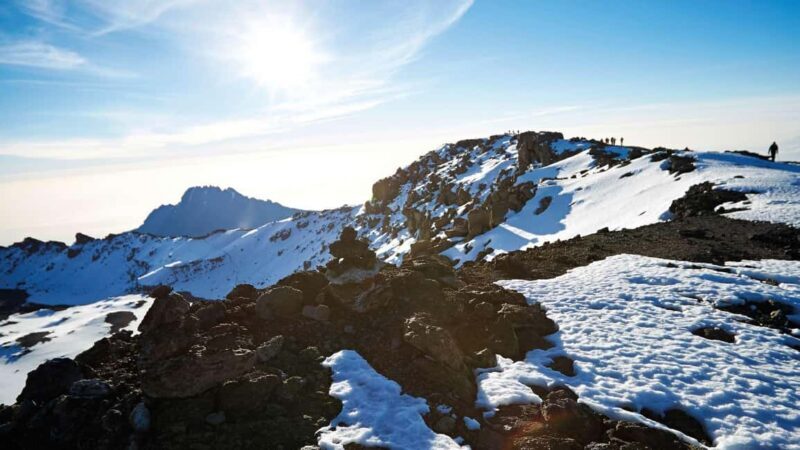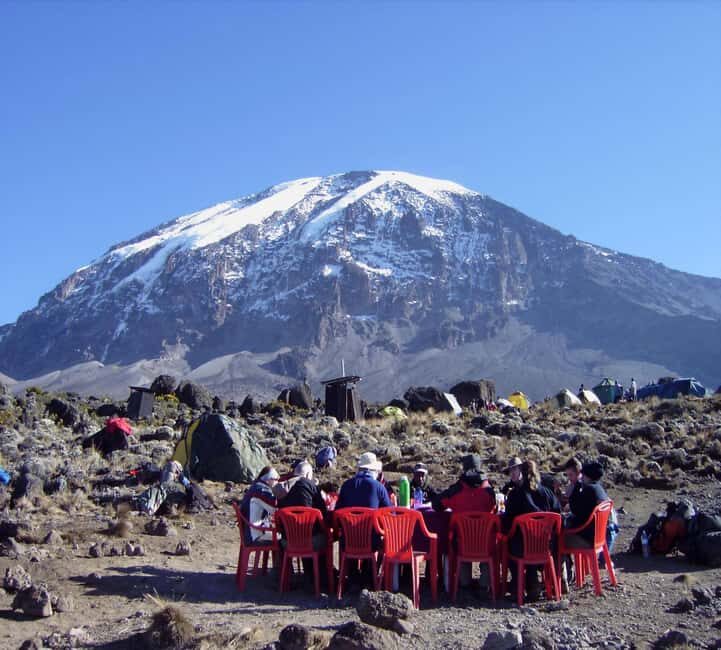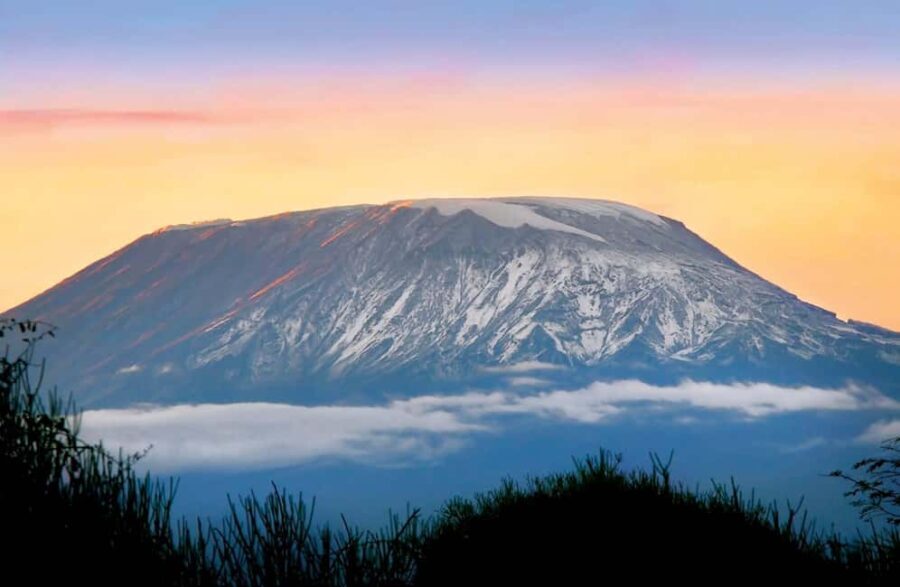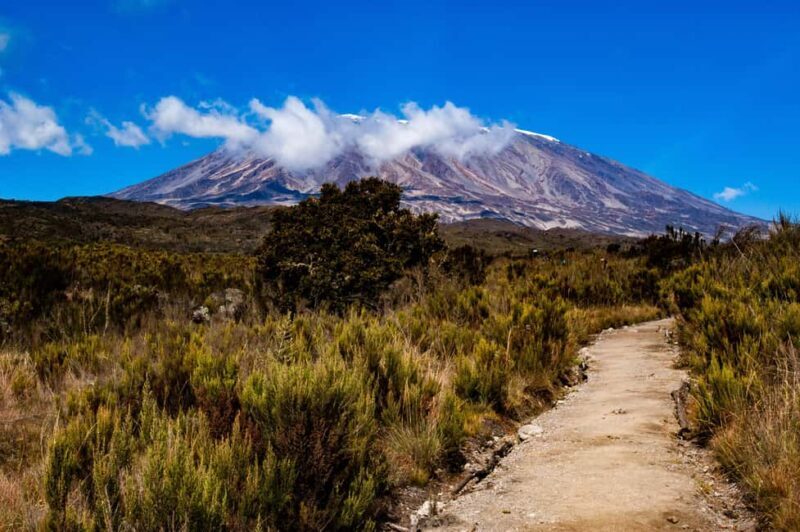Climbing Mount Kilimanjaro via the Machame Route: An In-Depth Review
If you’re considering taking on the world’s highest free-standing mountain, the 6 Days Kilimanjaro Machame Route from Jairos Adventure offers an appealing mix of scenic beauty, challenging terrain, and well-structured itineraries. While we haven’t personally scaled this peak, extensive research and traveler reviews have shed light on what makes this journey exceptional—and what potential hikers should keep in mind.
What we love about this experience is how it balances breathtaking landscapes, like the Shira Plateau and Lava Tower, with careful acclimatization strategies. The route’s popularity isn’t a secret, so expect some crowds, especially near the summit, which might reduce the sense of wilderness for some. Still, this trek suits those with a good fitness level who crave a genuine adventure with plenty of opportunities for photo-worthy moments.
This trip is best for adventurers eager to summit Kilimanjaro with guided support, and those who appreciate scenic variety combined with a structured ascent. If you want a memorable challenge that’s relatively accessible with proper preparation, this tour hits many of the right marks.
Key Points

- Stunning scenery: The route passes through lush rainforest, moorlands, semi-desert, and alpine zones, providing constantly changing landscapes.
- Expert-guided experience: Experienced guides, porters, and cooks ensure safety, comfort, and local insight.
- Good acclimatization: The itinerary includes strategic stops at Lava Tower and Barranco Camp to help prevent altitude sickness.
- Value for the price: At $2,629, the package includes all park fees, meals, camping gear, and transportation, making it a comprehensive option.
- Crowd factor: Due to its popularity, expect more trekkers near the summit, which can affect the serenity of the experience.
- Physical demand: The trek is physically demanding, with steep sections like Barranco Wall and the summit push, requiring good fitness and mental resilience.
Analyzing the 6-Day Kilimanjaro Machame Route

Here are more experiences we've reviewed in Moshi
The Introduction: From Hotel to Machame Gate
Your adventure begins with a drive from your hotel in Arusha or Moshi to Machame Gate, where you’ll officially enter Kilimanjaro National Park. From here, the journey into the lush rainforest begins, with some sections muddy and slippery—so gaiters and trekking poles are highly recommended. The walk through the forest is about 5-6 hours, covering roughly 11 km, and marks the start of your physical and mental challenge.
Travelers often find the initial part of the trek quite manageable because the terrain is gentle and the scenery lush. One reviewer mentioned, “The rainforest felt like entering a different world, dense and full of bird sounds,” which captures how enchanting this first stage can be.
Day 2: From Rainforest to Moorland at Shira Camp
The second day involves leaving the rainforest behind and climbing up to Shira Camp around 3850 meters. The walk is shorter—about 3 miles—but the change in landscape to moorlands is striking. This transition signals the start of more dramatic views, with the Shira Plateau spreading out before you. The gradual ascent helps your body acclimate, but some trekkers note feeling the altitude’s effects here, so pacing is key.
A common comment from past climbers: “Emerging from the rainforest felt like stepping into a different realm, with vast open spaces and sweeping views.” This part of the route is less strenuous but crucial for mountain acclimatization.
Day 3: Lava Tower and Barranco Camp
On day three, you’ll trek approximately 6 miles, heading towards Lava Tower at 3850 meters, a key point for acclimatization. The semi-desert habitat here looks stark yet visually fascinating, with volcanic formations. From Lava Tower, you’ll descend to Barranco Camp, where the landscape shifts again.
One review highlights the importance of this day: “Climbing Lava Tower was tough but worth it, as it helped me prepare my body for higher elevations.” This day emphasizes the value of strategic altitude gains, reducing the risk of altitude sickness and making the subsequent days more manageable.
More Great Tours NearbyDay 4: Barranco Wall and the Ascent to Barafu Camp
Early morning, you’ll confront the Barranco Wall, a highlight for many hikers because of its fun scramble and dramatic views. The wall is about an hour of climbing but is not technically difficult, more of a steep gorge that requires a bit of scrambling. The sense of achievement after conquering Barranco Wall is palpable.
From there, you’ll ascend to Barafu Camp at 4700 meters. The terrain becomes more barren and rocky, resembling an alpine desert. Travelers report that waking early to start the summit attempt is essential, as crowds gather around Stella Point, and the temperature drops sharply.
Day 5: The Summit Push and Sunrise
This is the most intense part of the trek. Starting around midnight, you’ll walk in the dark, climbing through scree and heavy snow towards Stella Point, approximately 5750 meters. The ascent is physically and mentally demanding, but the payoff is spectacular: witnessing the sunrise over Kilimanjaro’s glaciered summit.
One reviewer described it as “a surreal experience—standing on the roof of Africa in the dark, with only the stars above,” which encapsulates the awe-inspiring nature of this moment. The return trek down to Mweka Camp is around 8 miles, mostly downhill, but the fatigue from the night’s exertion makes it a challenging descent.
Day 6: Final Descent and Celebration
The last stage involves walking through the rainforest again, descending about 6 miles back to Mweka Gate. Lunch here marks the official end of your trek, and many travelers feel a mix of exhaustion and exhilaration. The drive back to your hotel in Arusha or Moshi wraps up the experience.
The Practical Aspects and What’s Included

This tour’s price tag of $2,629 covers everything you need for the trek: park entry fees, government taxes, experienced guides, porters, cooks, camping equipment, transportation, and meals. Having all these elements bundled simplifies planning and ensures proper support along the way.
The guides are highly experienced, ensuring safety and sharing insights about Kilimanjaro’s unique ecosystem. The porters and guides are paid fair wages, which is an important ethical consideration for many travelers. The camping gear provided, including tents and mattresses, means you only need to carry essentials in your daypack.
Not included are international flights, travel insurance, pre- and post-trek accommodation, and personal expenses. Also, travelers need to supply their own sleeping bag and bring cash for extras.
Transport & Logistics
Transportation from the hotel to the park gate and back is included, providing a seamless start and end to your trip. The group size isn’t specified but given the popularity of the route, expect some fellow trekkers on the trail, especially near the summit.
Timing & Physical Preparation
The trek lasts six days, with each day carefully scheduled to optimize acclimatization and enjoyment. The early start on summit day—between midnight and 2 am—is standard for high-altitude climbs and requires good sleep beforehand. The route is physically demanding, so a good fitness level is recommended.
Authentic Insights From Reviewer Feedback

Several hikers appreciated the route’s diversity, with one noting, “The views from Shira Plateau were exceptional, and the climb up Barranco Wall was just the right mix of fun and challenge.” However, some also pointed out that “crowds near the summit can diminish the wilderness feel,” reminding future trekkers to start early and be prepared for a crowded experience at the top.
The guides, including names like Daniel and Mussa, were praised for their professionalism and encouragement. Their local knowledge helped many hikers understand the mountain’s ecology and history, adding depth to the experience.
Who Is This Tour Best For?
This Kilimanjaro trek appeals most to adventurers with a decent fitness level who want a well-organized, guided climb. It’s suitable for those who value stunning scenery and a structured itinerary that maximizes acclimatization. If you’re looking for a more remote or solitary experience, the route’s popularity might be a drawback.
It’s also ideal for travelers who prefer having all logistics handled—from park fees to camping gear—allowing you to focus on the climb itself. While challenging, the route’s variety of habitats and breathtaking views make it a compelling choice for those willing to push their limits.
Final Thoughts
The 6 Days Kilimanjaro Machame Route from Jairos Adventure offers a well-rounded, scenic, and rewarding climb that balances adventure with support. The changing landscapes—from rainforests to deserts to icy summit—keep the journey engaging. The inclusion of acclimatization days helps safeguard your health, and the professional guides and porters ensure you’re well cared for along the way.
This tour represents great value for those seeking an authentic Kilimanjaro experience without sacrificing safety or comfort. The route’s popularity means it’s a proven choice, but be prepared for some crowded moments near the summit.
If you’re ready for a physical challenge, eager to witness extraordinary vistas, and want a trusted guide to lead the way, this climb is a solid pick. Just bring your determination, a sense of humor, and a camera to capture those once-in-a-lifetime views.
FAQ
How long does the trek last?
The entire Kilimanjaro Machame Route takes six days from start to finish, with each day designed to balance ascent, acclimatization, and rest.
What is included in the price?
All park entry fees, government taxes, services of guides, porters, and cooks, camping equipment, transportation, meals during the trek, and some refreshments are included.
Do I need special equipment?
Yes, you should bring comfortable hiking shoes, warm clothing, a hat, rain gear, gloves, and a daypack. The tour provides camping gear like tents and mattresses.
Is this route suitable for beginners?
While technically not very difficult, it is physically demanding and requires good fitness. Proper acclimatization helps, but you should be prepared for steep sections and high altitude.
What about altitude sickness?
The itinerary includes acclimatization days at Lava Tower and Barranco Camp, which are designed to help prevent altitude sickness. However, individual responses vary, so listen to your body.
Can I extend my trip?
Pre- and post-climb accommodations are not included but can be arranged separately. It’s recommended to arrive at least one day early to prepare and meet your team.
In the end, tackling Kilimanjaro via the Machame Route is about more than reaching the summit—it’s about experiencing some of Africa’s most stunning scenery with expert guidance. For those ready to embrace the challenge, it’s a journey that promises unforgettable views and a sense of achievement that lasts a lifetime.
You can check availability for your dates here:More Tour Reviews in Moshi
- Mount Kilimanjaro Day Hike All-Inclusive, No Hidden Fees
- Kilimanjaro: 6-Day Marangu Route Trek with Accommodation
- Kilimanjaro: Lemosho Route 7-Day Trek
- Moshi: Materuni Waterfall and Coffee Tour with Lunch
- Materuni Waterfall, Coffee Tour & Hot Springs- Maasai tour
- Materuni Waterfalls and Chemka Hot Springs Day Trip
Still browsing? Here are more Moshi experiences we've covered recently
- Mount Kilimanjaro Day Hike All-Inclusive, No Hidden Fees
- Kilimanjaro: 6-Day Marangu Route Trek with Accommodation
- Kilimanjaro: Lemosho Route 7-Day Trek
- Moshi: Materuni Waterfall and Coffee Tour with Lunch
- Materuni Waterfall, Coffee Tour & Hot Springs- Maasai tour
- Materuni Waterfalls and Chemka Hot Springs Day Trip
- 1-DAY MEMORABLE SAFARI AT MOSHI TO ARUSHA NATIONAL PARK
- Best Kilimanjaro Day Hike With Car Shira Plateau experience
- Moshi: Guided Kilimanjaro Day Tour
- Moshi: Maasai Boma Cultural Experience-1 Day with Transfers
- Day Tour Around Moshi Tanzania
- Best Day Trip to Maasai Village & Chemka Hot Springs
